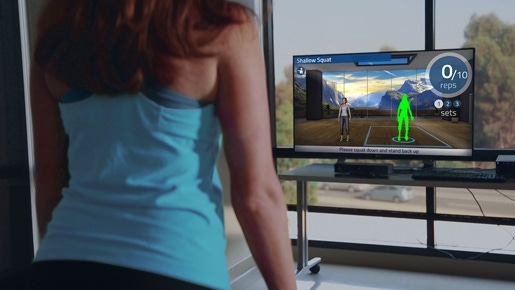With bundled payments for joint replacements coming, remote monitoring and tele-rehabilitation technologies are an attractive option for clinicians, patients, and health systems.
January 13, 2016

Ben Torres
Reflexion Health's solution leverages consumer technologies such as Microsoft Kinect to provide a remote rehabilitation program for joint replacement patients. |
The imminent Comprehensive Care for Joint Replacement (CJR) mandate set to launch April 1, 2016, will force providers to examine their process of care and find ways to ensure CJR requirements are met. One such option will be implementing remote monitoring and tele-rehabilitation technologies, which are an attractive option for clinicians, patients, and health systems. This is primarily due to the potential of these technologies to help clinicians keep patients engaged throughout their recovery from a total hip or knee replacement surgery. Here are some of the benefits healthcare providers will be expecting from the aid of remote monitoring and tele-rehabilitation.
Health Systems Can Control Postacute Care Costs
Many remote monitoring and tele-rehabilitation technologies are focusing on creating tools that enable clinicians to objectively measure how patients are doing in the home. By knowing how well patients are responding to their in-home exercise prescriptions, it is expected that health systems will be able to accomplish the following:
Gain insight into postacute care utilization.
Patients Will Be Engaged Throughout Their Recovery
Remote monitoring or tele-rehabilitation tools show potential to provide basic feedback to patients, guide patients through their rehab exercises when a clinician is not present, and communicate with their care team while not having to be in the clinic. For the patient, this consistent interaction has the potential to accomplish the following:
Deliver a concierge rehab experience.
Drive patient engagement and guide patients immediately after surgery.
Provide high-quality care with dignity in the environment patients care about the most: the home.
Clinicians Can Enhance Continuity of Care
One of the most attractive aspects about remote monitoring technology is that it offers many features that can enhance communication between the patient and clinician. Among these applications are telehealth, mobile apps, and motion capturing capabilities. With these multitude of features, the provider can accomplish the following:
Decrease hand offs among providers.
See the entire episode and be able to treat patients from a peri-operative view.
Properly set patient expectations before and after surgery.
Be proactive with complications before they turn into readmissions and revisions.
Enhance patient satisfaction and convenience by making it possible for the patient to interact with their clinician from their home.
Improve overall patient satisfaction and HCAHPS scores.
The recent Medicare ruling on CJR is bringing sweeping change to how joint replacements are done. And it is vital that healthcare providers take a proactive approach in finding the right technologies and partnerships, so they can successfully navigate through this sea of change and continue to deliver optimal care for patients.
Learn more about how changing healthcare reimbursement models are driving medtech innovation at the MD&M West conference, February 9-11, 2016, at the Anaheim Convention Center. |
Ben Torres works as a clinical specialist and accounts manager for Reflexion Health, a digital medicine startup from San Diego, CA.
You May Also Like


.png?width=300&auto=webp&quality=80&disable=upscale)